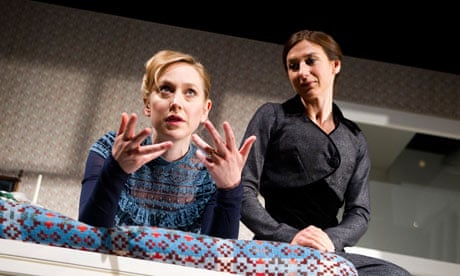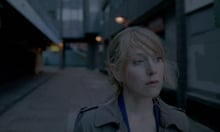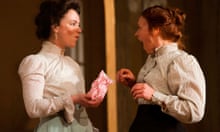"Do you think Shaw is coming back?" a student once rashly asked the late Oxford Playhouse director Frank Hauser. "I didn't know he'd been away," was Hauser's sharp reply. Much the same applies to Henrik Ibsen. You can't really talk about an Ibsen revival since, in the near-half-century I've been reviewing theatre, his plays have hardly ever been off the British stage. What's unusual is to have three new productions arriving in a week: A Doll's House opened last Monday at the Young Vic, swiftly followed by Hedda Gabler at the Royal and Derngate in Northampton; then, last Thursday, a comparative rarity: his early play St John's Night at London's Jermyn Street theatre.
What is it about the old sage of Skien that still fascinates us? At its most basic, I think it's the fact that Ibsen is both ancient and modern. Structurally, his best work owes a debt to the 19th-century ideal of the "well-made play" in that it relies on suspense, surprise, calculated contrivance. Watching A Doll's House last week, I was struck by the visible artifice with which the immediate threat to the heroine, Nora, is allayed when her friend, Mrs Linde, offers to marry the blackmailing Krogstad. Seeing Hedda Gabler the next night, I noticed how convenient it was that the person who discovers Eilert Løvborg's irreplaceable manuscript by the roadside is the one man who truly understands its genius, George Tesman. In an age when dramaturgy is more influenced by the cinema than Sophocles, we warm to Ibsen's formal precision.
But that's only half the story. We go back to Ibsen time and again because, as Mark Lawson observed last week, his plays are totally modern. When The Wild Duck was done at the Donmar Warehouse in 2005, Ibsen's assault on the dangers of the interventionist idealist seemed rivetingly topical with Blairism at its height. Every revival of John Gabriel Borkman, a portrait of a fraudulent financier living in a Napoleonic dream-world, seems to reflect the experience of whichever top tycoon is currently in trouble. And one never tires of Hedda Gabler, which will shortly get another outing with Sheridan Smith at the Old Vic, because of its vision of economic and intellectual equality between the sexes: that's why the key image, as the destructive Hedda prepares to shoot herself, is of Tesman and Mrs Elvsted settling down to reconstruct Løvborg's lost manuscript.
Ibsen is both old and new at the same time. He is also, and this is crucial, never simple. The textbooks used to tell us Ibsen's career fell into three parts. First there was the experimental period when he tried his hand at everything including epic poetic dramas (Peer Gynt and Brand). Then there was the naturalistic period (Ghosts, A Doll's House, An Enemy of the People). Finally came the reversion to symbolism (The Lady From The Sea, The Master Builder, When We Dead Awaken). It makes a rough kind of sense, until you actually see the plays on stage and realise that naturalism and romanticism were always fighting a battle for dominance inside Ibsen's Nordic soul.
St John's Night, which a colleague once described to me as "wonderfully bonkers", looks like a piece of pure fantasy with its goblins, magic potions and mountain visions – yet there is a scathing realism in Ibsen's portrait of posturing poet who thinks he will return to his primitive roots by carrying a sheath-knife and restoring Old Norse. And later, when Ibsen makes realism his prime mode, there is always a strong element of symbolism on display. Just think of the tarantella that Nora dances in A Doll's House, which sexually excites her husband, Torvald, before they head off for an evening party. Elizabeth Robins, who pioneered many of Ibsen's plays in Britain, thought the scene "too stagey". Yet now it seems central to the play, and as frenziedly performed by Hattie Morahan at the Young Vic, it becomes what the critic Toril Moi in her brilliant book Henrik Ibsen and The Birth of Modernism calls "a graphic representation of a woman's struggle to make her existence heard, to make it count".
If any dramatist aided that struggle, it was Ibsen himself: yet another reason for his popularity is the astonishing gallery of roles he created for women, from the youthful Hilde Wangel in The Master Builder to the mature Mrs Alving in Ghosts. Historically, the plays that survive are always those that provide great parts. But Ibsen also offers a permanent challenge not just to actors but also to directors, designers and audiences. We are still catching up with his ideas and still learning that he is never quite what he seems. With his big whiskers and severe specs, Ibsen may look like a pillar of 19th-century respectability. But underneath that deceptive facade lies a restless demon.





Comments (…)
Sign in or create your Guardian account to join the discussion